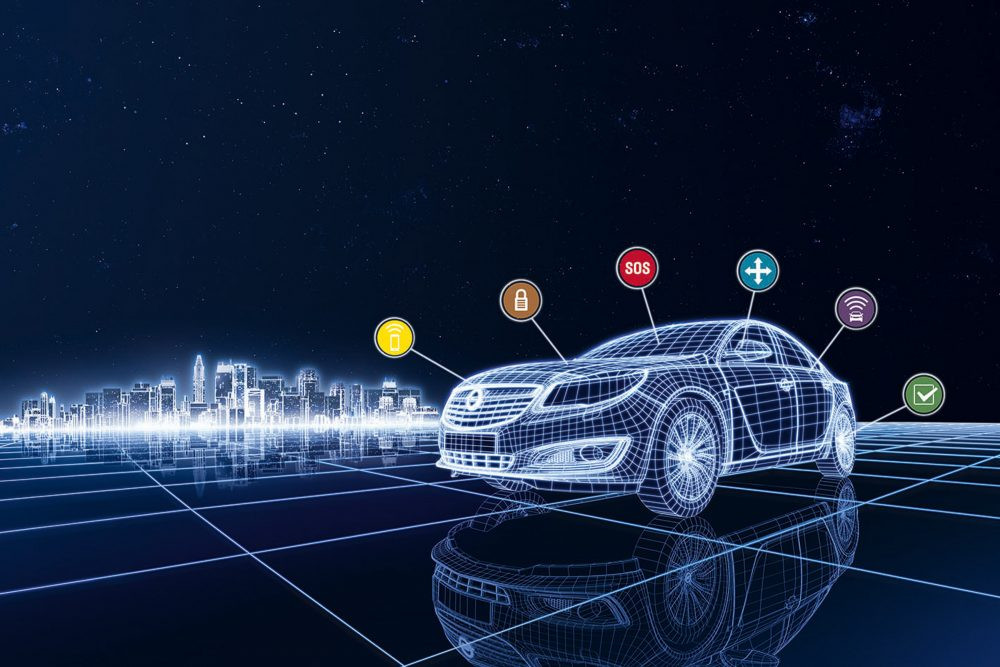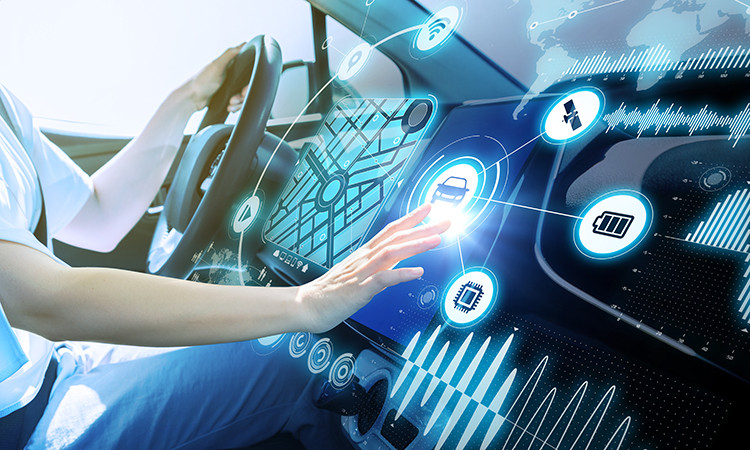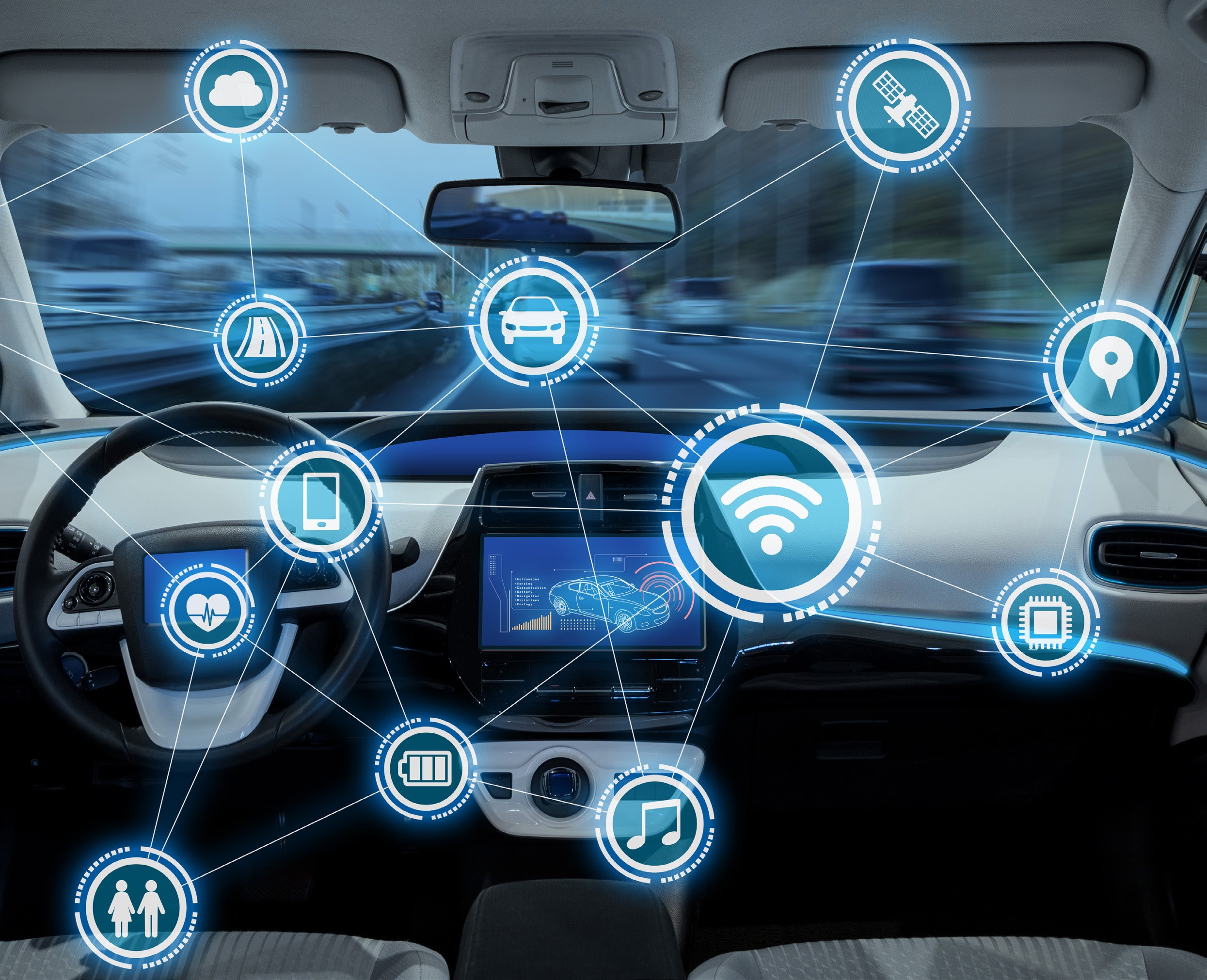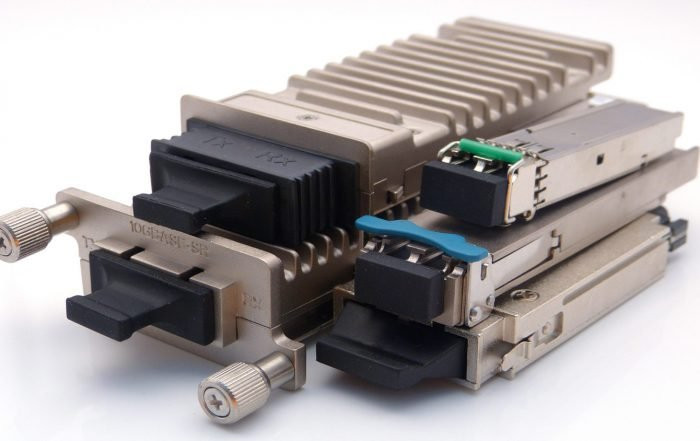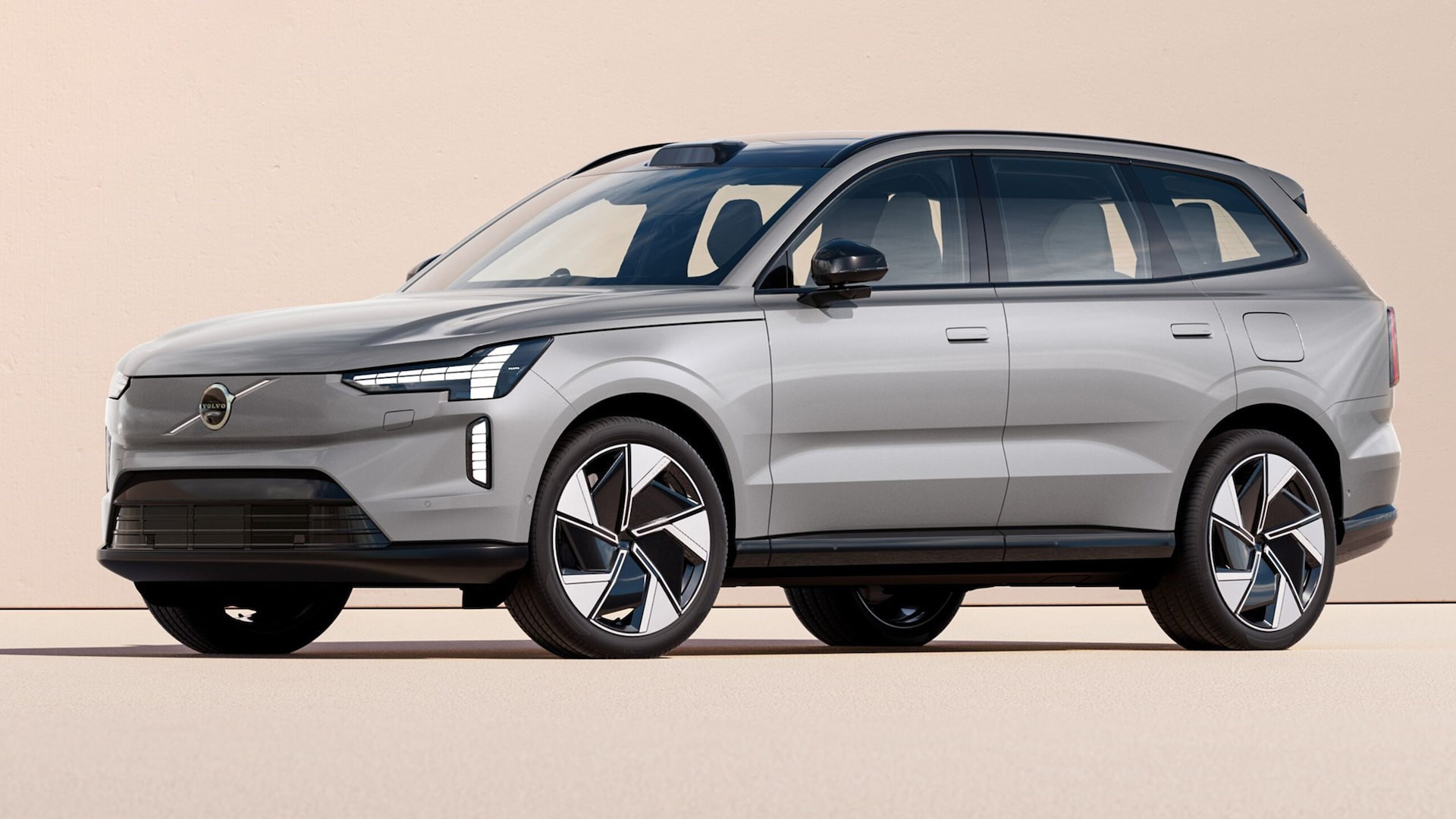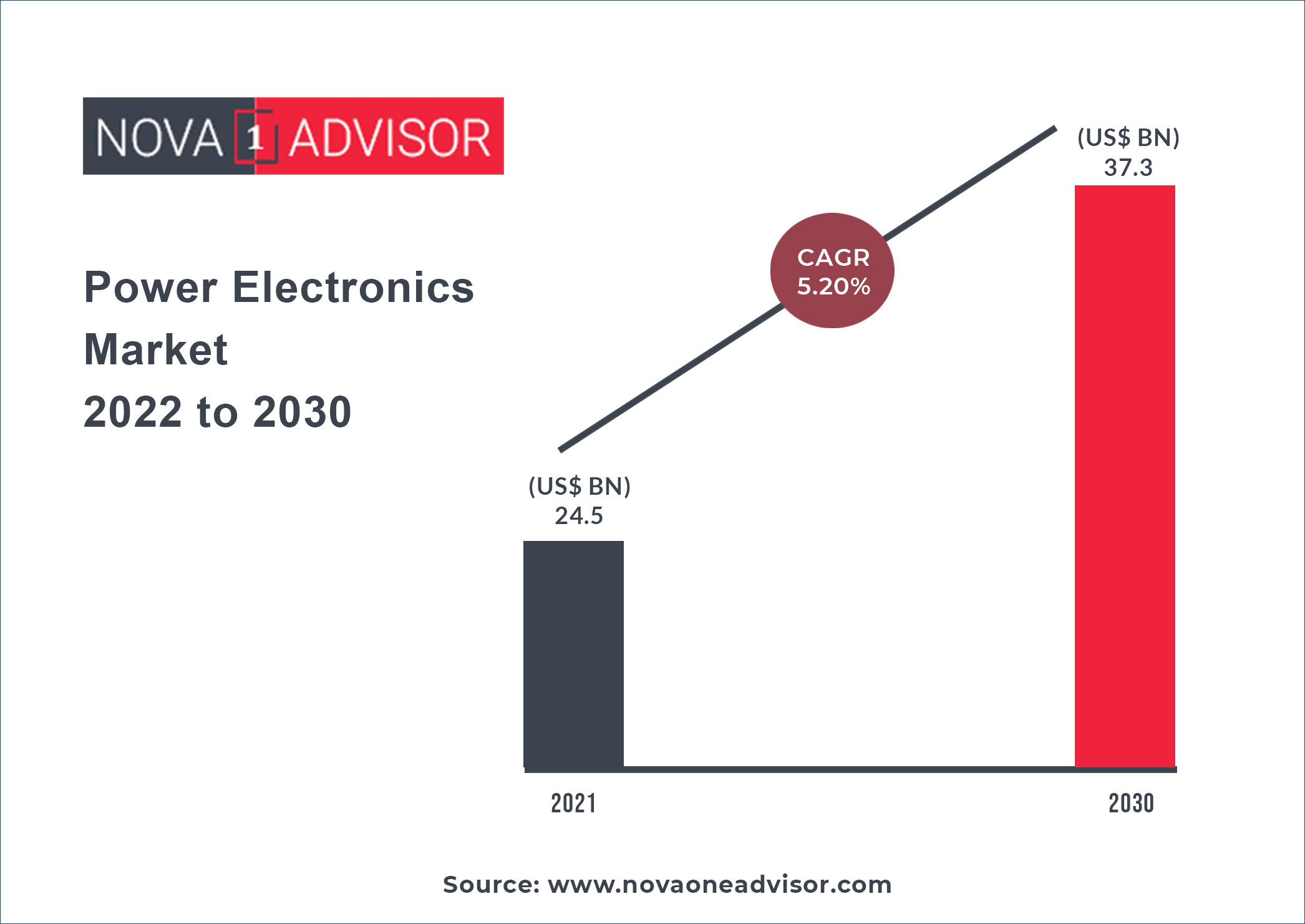Technology has taken over the automobile industry. As cars shift from sedans to SUVs and from traditional engines to electric and hybrid options, cutting-edge tech is driving this change. It is no wonder, therefore, that the notion of connected cars has now become a hot topic, leading the way in this new era of smart driving. But what is a connected car? To begin with, connected cars are vehicles that come equipped with internet connectivity and various digital technologies that enable communication between the car, its internal systems, external devices, and cloud services. These vehicles can send and receive data, offering a wide range of features aimed at enhancing safety, convenience, efficiency, and entertainment for drivers and passengers.
So prevalent has this become now that according to a report by consulting firm McKinsey, by 2030, 95% of new vehicles sold globally will be connected. This is especially significant for domestic automobile manufacturers as they race to cater to consumer demand.
The Rise of Connected Cars: A Journey Through Time
The concept of connected cars has been around for decades. In 1996, General Motors’ launch of the GM OnStar in Cadillac marked the automotive industry’s first big step toward connected cars, blending cutting-edge tech with vehicles. Luxury brands like BMW, Mercedes, and Audi quickly followed, and by the late 2010s, smartphones and mobile internet brought even more advanced connected car systems into play.
Today, software-as-a-service (SaaS) has come a long way. With Generative Artificial Intelligence (Gen AI) and the Internet of Things (IoT), connected cars now offer more than just real-time navigation and infotainment. They include vehicle-to-everything (V2X) communication and advanced driver-assistance systems (ADAS), like adaptive cruise control, lane-keeping assist, and automatic emergency braking. These features use sensors and cameras to boost safety and prevent accidents.
Connectivity in a vehicle offers multiple levels of confidence. “It provides security through safety features, utility through payment options, and entertainment, including access to the Play Store. This comprehensive stack helps integrate connectivity into the mainstream of a consumer’s life,” says Gaurav Gupta, Deputy Managing Director of JSW MG Motors India.
Connected Cars in India: A Booming Market
The Indian connected car market is experiencing rapid growth, with a projected Compound Annual Growth Rate (CAGR) of 22.2% from 2019 to 2025, according to a report by Markets and Markets.
In 2015, after Honda Cars India introduced its flagship connected car feature, Honda Connect, several automakers began integrating technology into the domestic automotive space. In 2019, South Korean automaker Hyundai introduced its connected car technology, Bluelink, in the flagship sedan, Verna. The same year, JSW MG Motors India (formerly known as MG Motors India), identifying itself as an auto-technology brand, introduced the MG i-Smart technology in the MG Hector.
According to Gupta, introducing this feature was a game changer for the company. “That was when many consumers and the auto industry got a taste of a car with an embedded SIM, providing numerous features in the connected space,” he notes.
Connected Car Features: A Growing List
As the market has grown, the features present in a connected car have grown too. Tata Motors’ connected car platform, iRA, for instance, provides features such as remote vehicle control, real-time tracking, and vehicle health monitoring.
“As we move forward, the penetration of connected cars will continue to grow, alongside advancements in autonomous driving and active safety features,” says Shailesh Chandra, MD of Tata Motors Passenger Vehicle and Tata Passenger Electric Mobility Ltd.
Meanwhile, Maruti Suzuki’s Suzuki Connect platform offers vehicle health monitoring, location tracking, and emergency assistance. Mahindra’s connected car technology includes remote diagnostics, tracking, and integrated infotainment options.
The Connected Car Landscape: Top Players in India
But if most of the top automakers are now offering connected cars to the discerning consumers, how do the companies stack up vis-à-vis each other? As per Jato Dynamics, in the connected cars segment, Maruti Suzuki is the leader, with a share of 22.42%, followed by Hyundai (16.2%), Toyota (13.62%), Mahindra (12.66%), Tata Motors (10.02%), Kia Motors (8.51%), and MG Motors (3.96%).
The Future of Connected Cars: V2X and Beyond
As automakers race to achieve electrification targets by 2030, they are integrating more technology in line with this transition. As technology continues to advance, connected cars will become even more central to the driving experience, particularly with the growing prominence of electric vehicles and autonomous driving.
For example, JSW MG Motors India has partnered with Jio to launch the MG Jio Innovative Connectivity Platform (MG-Jio ICP) with a Home to Car feature, which will be available in its upcoming Windsor EV and future EV models.
“Connected cars get a fantastic boost with electric vehicles because EVs set the stage for increased connectivity,” says JSW MG Motor’s Gupta.
According to automakers, V2X technology will be a key driver of the automobile industry’s future. “From the IoT space, V2X will be the next leap in a few years, creating a unified connected ecosystem where vehicles, infrastructure, and connectivity platforms interact harmoniously,” says Gupta.
V2X technology allows vehicles to communicate with each other, with infrastructure, and even with pedestrians. For example, vehicle-to-vehicle communication can help prevent collisions by warning drivers of approaching vehicles. According to a report by MarketsandMarkets, the global automotive V2X market was valued at $0.5 billion in 2023 and is expected to reach $9.5 billion by 2030, growing at a CAGR of 51.9%.
A key development that has happened in the auto sector is that like we have in smartphones, cars too will receive continuous software upgrades. According to Chandra, this will ensure that cars will not be limited to the features they had when initially purchased but will continue to evolve.
“The biggest trend from the mobile industry that will influence the automotive space is the software-defined vehicle. Like smartphones, cars should keep upgrading with time and this will be a key feature for cars in the future, especially now with AI playing a major role,” says Chandra.
The Global Market Outlook: A $463 Billion Opportunity
The global connected vehicle market is projected to reach a staggering $463.38 billion by 2033, according to The Brainy Insights, a leading market research firm. This impressive growth is attributed to a rising demand for vehicle safety, driven by the increasing number of road accidents worldwide. Connected vehicles offer a safer and more secure alternative to traditional vehicles by enabling the measurement of distance, speed, and other factors.
Key Drivers of Market Growth
The market is fueled by several factors, including:
- Rising Need for Enhanced Vehicle Safety: Connected vehicle technology can help prevent accidents by providing drivers with real-time information about their surroundings.
- Growing Reliance on Technology: Consumers are increasingly demanding vehicles with connectivity features, allowing them to safely use music streaming apps, audiobooks, or make phone calls while on the road.
- Traffic Congestion and Delays: Connected vehicle technology can help alleviate traffic congestion and delays by diverting vehicles away from high-traffic areas.
- Autonomous Vehicles: The growing acceptance of self-driving or automated vehicles is driving market expansion.
Challenges and Restraints
The market faces several challenges, including:
- Cyber-attacks: As connected vehicles become more prevalent, the risk of hackers accessing vehicle systems and compromising safety increases.
- High Maintenance Costs: Modern suspension systems can be expensive to maintain.
- Evolving Global Vehicle Regulations: The market must adapt to constantly changing regulations.
- Rising Cost of Raw Materials: The rising cost of raw materials can potentially slow market growth.
Conclusion
The future of the automotive industry is undoubtedly connected. With advancements in technology, connected cars are poised to become even more sophisticated, offering a wide range of benefits for drivers and passengers. As the market continues to grow, we can expect to see even more innovation in this exciting space. The increasing adoption of electric vehicles and autonomous driving technologies will further accelerate the growth of the connected car market, making it one of the most dynamic and transformative sectors in the world today.




